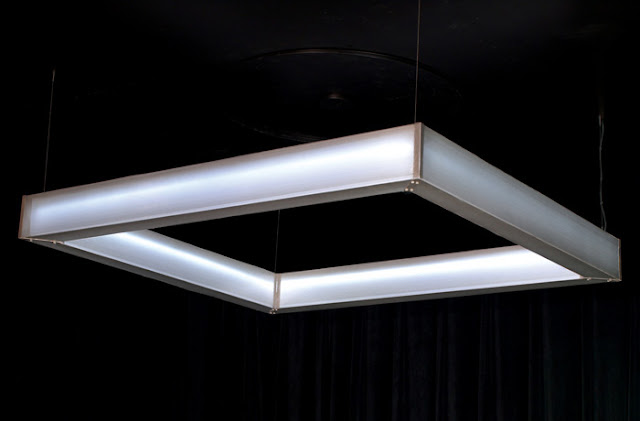Weaving the Past with the Present
(This is the first of a two-part blog highlighting Project 2097)
The First Unitarian Society of Madison, Wisconsin, commissioned Fire Farm to do the lighting for the new addition to their Frank Lloyd Wright-designed Meeting House, and to update the lighting in the original historic structure. Earlier this year, the Fire Farm crew took a field trip to see the fruition of their labor.
Upon arrival we immediately knew that we had been part of something truly special. Over a half century earlier an icon of American Architecture, Frank Lloyd Wright, had designed what is now considered one of the prime examples of Twentieth Century Architecture.
After an extensive tour of the Historic Meeting House, in a physically seamless, but aesthetically distinct transition we were led into the new addition. With only a slight elevation on the landscape of Wright’s structure, one is awestruck as the corridor opens into a cavernous space. Where Wright’s structure soars upward, the new addition hosts an environmentally friendly flat membrane roof with vegetation reaching out and away. Wright’s structure was conceptualized using T-square and drawing board, the new addition with CAD and computer.
Video courtesy of FUS Madison
Kubala Washatko Architects of Cedarburg, WI., with lead architect Vince Micha very cleverly integrated the new structure into the landscape in a way that is both complementary and deferential to the historic structure. The new construction, executed by the craftsmen of
J.H. Findorff and Sons, Inc., has received a LEED Gold Rating from the
US Green Building Council, as well as the 2009 SE2 Merit Award from the Wisconsin Green Building Alliance, and the 2009 Sensitive Addition to a Historic Structure Award from the Madison Trust for Historic Preservation.
The attention given to every detail by The Society was inspiring. It was a wonderful opportunity to see our work in its final home. Very often we work from afar and are specified in a way that separates us from a comprehensive vision of the project. This project allowed us to work closely with the architects from the very early stages of development, leading to an evolution of design that was uniquely suited to its environment. Luckily the Madison church was within a few hours of our studio which allowed us to all visit our work in its permanent home, providing a satisfying closure to the project.
Custom fixtures designed for the First Unitarian Society of Madison:
Jim Walch of Fire Farm
---
What do you think? Have a comment?
Click "Leave a comment" below.































